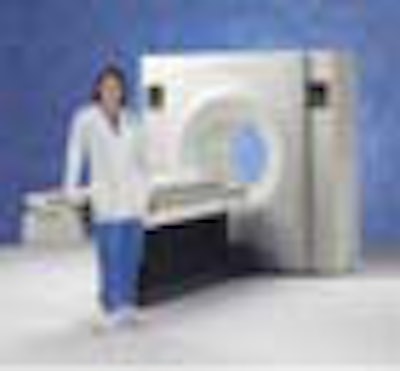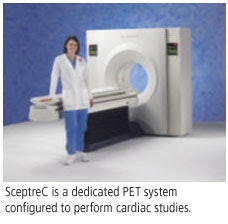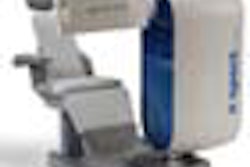
The SceptreP3 PET/CT system will be spotlighted by Hitachi Medical Systems America at the 2006 RSNA show, and the company will demonstrate its SceptreC dedicated cardiac PET system.
SceptreP3 includes dual attenuation correction (DAC) technology, which enables the combination of both CT and cesium-source attenuation correction to effectively image patients with metal implants and prosthetics. The system also features a nonrigid Fusion7D algorithm cleared by the U.S. Food and Drug Administration that provides image registration by correcting for respiration differences between PET and CT acquisitions. In addition, the product is integrated into the vendor's Avia PACS architecture, which improves operational communication, multimodality connectivity, and scalable RAID archiving capabilities, according to Twinsburg, OH-based Hitachi.

Introduced at the SNM meeting in June, the SceptreC dedicated cardiac PET system has been configured for the use of both rubidium-82 for myocardial perfusion and 18-FDG for myocardial viability studies. The LSO-based system has been optimized with 3D Pico electronics to provide high count rate and cardiac gating capability, in addition to the Emory Cardiac PET Toolbox for cardiac quantification. Hitachi said that SceptreC features a myocardial perfusion study acquisition time of less than seven minutes.
SceptreC features cesium-137 sealed-source attenuation correction that operates in singles mode, providing a higher photon flux than germanium and eliminating the need for annual source replacement due to its 30-year half-life, Hitachi said. Cesium-source attenuation correction allows two-minute acquisitions compared with CT-based transmission imaging at less than one minute but without CT registration artifacts, according to the vendor.
By Jonathan S. Batchelor
AuntMinnie.com staff writer
November 15, 2006
Copyright © 2006 AuntMinnie.com



















